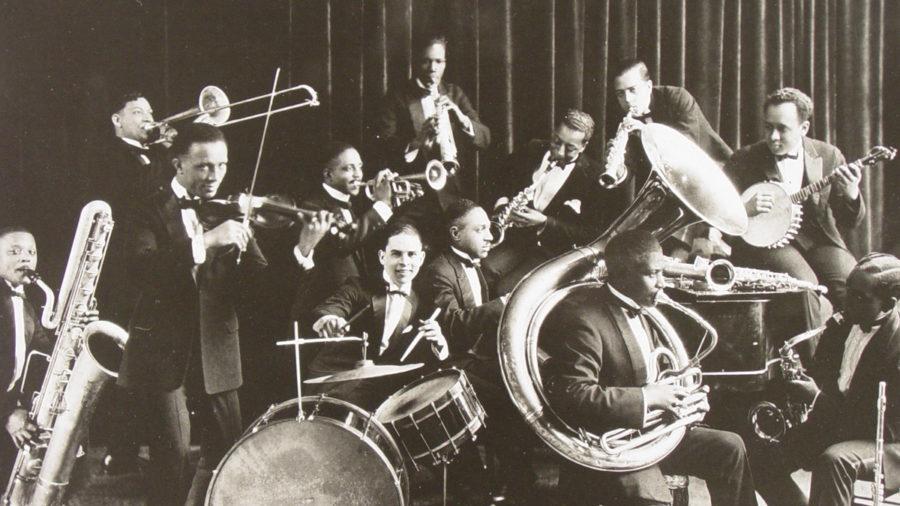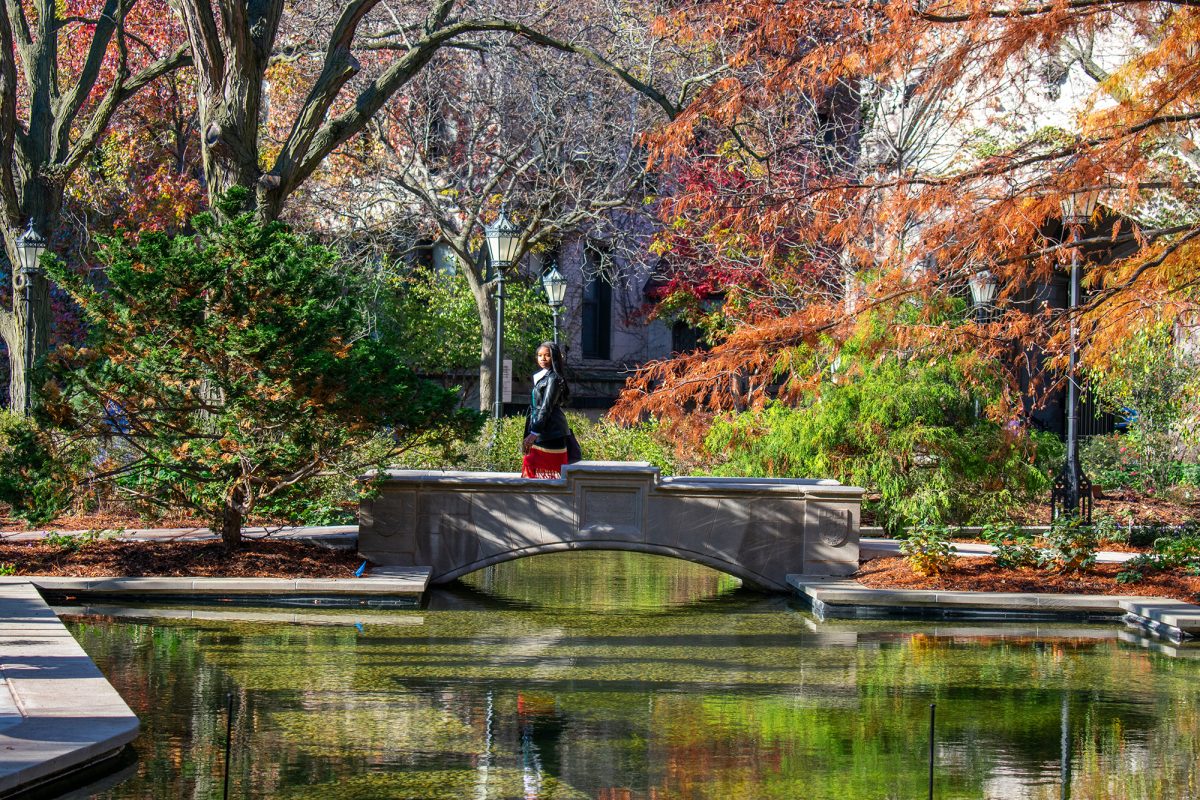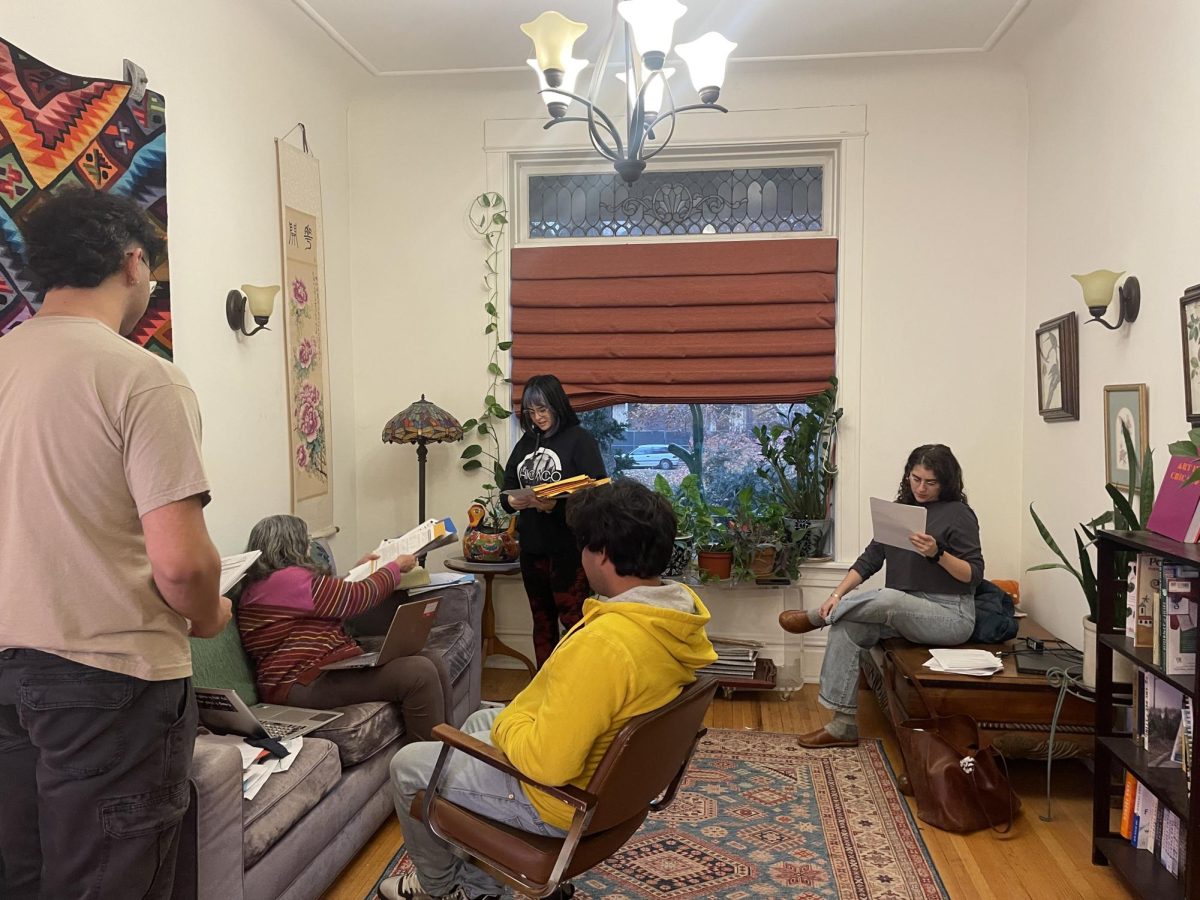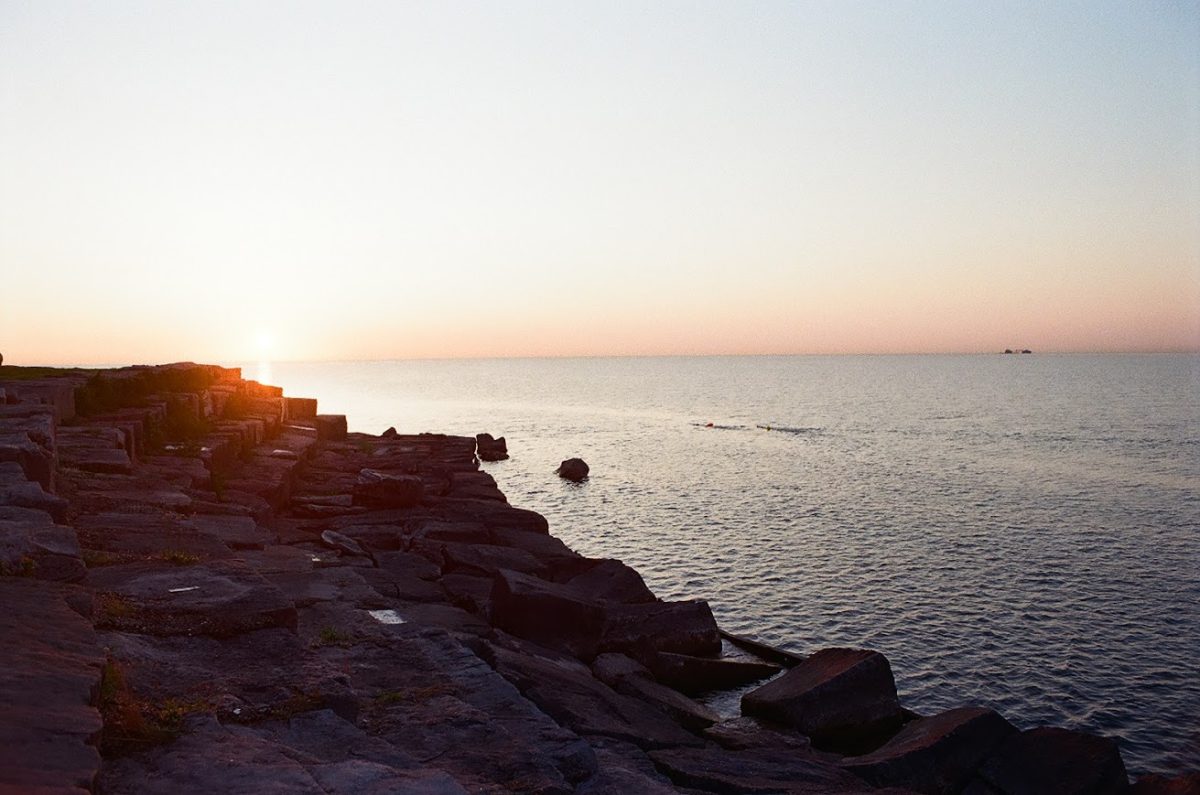Walk down South State Street today and you won’t notice much special—a 7-Eleven, a Starbucks, the Illinois Institute of Technology—but that was not always the case. Described by The Chicago Defender as the “Bohemia of the Colored Folks” and “a Mecca for Pleasure,” it earned the South Side comparisons to Rome and Athens as a cultural center for African Americans. Primary accounts of The Stroll, as the street was called, describe a vibrant scene. “At night the crowded sidewalks rang with music and laughter, the cabarets, vaudeville and movie theaters interspersed with gaudy chile, chop suey, and ice cream parlors,” William Howland Kenney writes in Chicago Jazz. This stretch from 31st to 35th Street was the crux of the jazz scene and where most jazz clubs could be found; northward there were limited venues, and clubs downtown tended to hire white bands anyway, explains Charles Sengstock in Jazz Music in Chicago’s Early South Side. In addition to over 70 jazz clubs, there were 15 vaudeville and movie theaters like the Vendome and the Grand.
But you probably didn’t know that. I certainly didn’t. Mike Allemana, a graduate student specializing in Chicago jazz, says that most people don’t. The narrative that jazz was ferried up the Mississippi River to Chicago, and then to New York City, where it metamorphosed into America’s greatest musical export, is deeply embedded in America’s social imagination. But this is a gross oversimplification. Chicago isn’t even on the Mississippi River! While jazz is thought to have originated in New Orleans, and a comparable scene developed in New York, Chicago was far more than a pit stop.
In his book Jazz: The Basics, Christopher Meeder writs, “It is notable that in most accounts of the beginnings of jazz, the crucible was the city of New Orleans.” He continues, “Jazz resulted from the synthesis of many predecessors of various origin—some African, some Latin American, some European.” Crucially, the status of New Orleans as a hub of the American slave trade brought all of these cultures together. Jazz scholar William Howland Kenney says, “Jazz legend has focused on the U.S. Navy Department’s November 12, 1917 closing of ‘Storyville,’ New Orleans’s celebrated red-light district, as the fundamental impetus to the emigration of jazz musicians from the Crescent City.” Seeking employment, throngs of musicians made their way to Chicago, where a musical scene was already established. This occurred at the same time as the Great Migration, in which “Chicago attracted slightly more than 500,000 of the approximately 7 million African Americans who left the South,” according to the Encyclopedia of Chicago. Improvisation arrived with these musicians and reshaped jazz into the form we know today; prior to this point, the jazz being played in the North was far more classical. Early advances in jazz were captured on phonograph records in 1920s Chicago, thanks to legends like Louis Armstrong and King Oliver. These recordings went on to influence the direction of jazz music for years to come, says Kenney.
Dismissing Chicago’s jazz history is an easy mistake to make, not least of all because of the lack of historical record. While nationwide newspaper archives from the ’20s to ’50s are full of stories of east coast jazz, Chicago is conspicuously absent from discussions of jazz’s proliferation. Even in Chicago’s own print publications, jazz is glossed over. According to Professor Jennifer Iverson, Claudia Cassidy, the music critic for the Chicago Tribune from 1942 to 1965, wrote chiefly on classical music, despite the fact that there was a documented phenomenon of white Chicagoans frequenting Black-owned jazz clubs.In his article, Chicago’s Jazz Trail, Dempsey J. Travis states that large numbers of white university students in particular would visit the South Side as patrons of “black and tan” cabaret clubs, as they were called due to their mixed patronage. It’s unlikely that the Tribune took jazz seriously, as Maureen Anderson of Illinois State University explains that “white critics often hid behind black stereotypes in order to explain the increased fascination the world had with jazz. Some, in utter contempt, wrote that jazz plagiarized and then mutilated the works of classical, white composers. Still other critics maintained that jazz was dangerous, unhealthy, or, even worse, a form of bayou voodoo.”
The hotbed of creativity on Chicago’s South Side was a significant pull for musicians from around the country according to Kenney. He writes that the “institutional roots of Chicago jazz reached back to a turn-of-the-century nightclub, gambling hall, and political hot spot called the Pekin Inn, at 2700 South State Street.” Founded as a beer garden serving an integrated clientele, it reopened in 1904 as a music hall. The 1,200-seat theater, owned by Black entrepreneur Robert Motts, was known for productions written, produced, and performed by Black artists. Featuring a 120-piece orchestra, the theater put on over 100 musicals and comedies. It was this community and infrastructure that welcomed new musicians to Chicago. The Pekin and similar establishments were key to the development of jazz in two ways: According to Sengstock, Jazz bands often played in theaters as well as clubs, helping them to reach wider audiences, and they undoubtedly served as an inspiration for the clubs that would populate The Stroll starting in 1910.
31st and 35th Streets were the two main arteries that branched off of The Stroll, and had healthy club populations themselves. East 35th Street boasted the Entertainers Club, the Sunset Cafe (now an Ace Hardware store), Plantation Cafe, not to mention the black and tan cabarets. The Stroll was not just important as a “bright lights district” or a watering hole; the work of its musicians furthered the development of the genre in profound ways. Kenney comments that “regular employment in Chicago’s cabarets helped to shape the evolution of instrumental techniques, solo flamboyance, skills in accompaniment, jazz band repertoires, and new concepts in composing and arranging.”
As the South Side was the heart of Chicago’s jazz scene, the West Side was mostly populated by blues clubs, noted Allemana. According to the Encyclopedia of Chicago, the clubs that populated the South Side up to the 1940s were chiefly jazz clubs. Allemana said that archival interviews with jazz musicians share stories of playing West Side gigs where audiences grew impatient, asking when they would start playing blues music instead. It’s important to note that they are fundamentally two different genres—blues is a far more static style, typically emphasizing the lyrical content and featuring a singular singer and guitar player. Jazz, on the other hand, made its name for playing with dynamics and improvisation. This boundary, while permeable, was observed clearly by both musicians and patrons. “These musics were all around each other and probably cross-pollinated each other, but there was still a distinction that musicians make even now,” Allemana concluded.
With the passage of time, changing tastes in music were inevitable. Less apparent but equally relevant to the decline of jazz in Chicago was the development of the South Side. The city’s mid-century urban renewal programs destroyed swaths of the city that were densely populated with theaters and clubs. The neighborhoods surrounding Hyde Park had been home to a vibrant club scene and a burgeoning Black middle class. The growth of the University displaced many of the clubs bordering Washington Park, below Garfield Boulevard. One example that stands out is Club DeLisa, home to drummer Red Saunders’s band for many years, and a mainstay of Chicago jazz according to Allemana. The Encyclopedia of Chicago reports that the South Side Planning Board was, critically, charged with developing a seven-square-mile tract of land from Cermak Road south to 47th Street, spanning from Michigan Avenue to the Pennsylvania Railroad. This included Douglas and Bronzeville, where almost 70 clubs lined The Stroll. According to the Black Metropolis Research Consortium, a Chicago based alliance of libraries, universities, and archives, “The Mecca Flats, located between State and Dearborn on 34th Street, had a significant role in Black culture in Chicago during the first half of the 20th century. Residents organized to protect their home, but could not succeed. The building was razed for Illinois Institute of Technology expansion in 1951.” Commenting on the disproportionate destruction of the South Side, they continue: “It was easy for an area to fail standards: Chicago had only started a system of zoning in 1923, and many older neighborhoods would not meet new requirements without significant financial investment. Many of these razed neighborhoods were replaced by high-rise public housing projects.”
As a result of urban renewal, clubs simply couldn’t find the space or the money to move or reopen, suggests Allemana. The South Side jazz scene continued into the ’90s, but it presented a stark contrast to the heyday that reigned through the ’60s. He shared an anecdote of former jazz musician Teddy Thomas, who had so many gigs he barely slept. Thomas worked at The Archway clubfrom nine in the evening until four in the morning, all while maintaining a day job as a park supervisor for the City park district. Clubs like the Other Place and the New Apartment Lounge on East 75th, where Allemana himself played, closed in the ’90s after several decades of successful business, while clubs on the North Side could afford to stay open.
One only needs to look at headlines from the first few decades of the 20th century to understand that jazz is tightly intertwined with the racial and sociopolitical dynamics of the nation: Anderson’s article shares such gems as, “Why ‘Jazz’ Sends Us Back to the Jungle” and “Official declares the ‘Jazz Age’ Has Increased the Use of Drugs” all appeared in newspapers in the early part of the century. But more than indicating the tastes of white America, the trajectory of jazz in Chicago showcases the symbiosis between its Black and white populations. Corralled in the South Side with no other venue, jazz became a force of nature. When it was no longer considered a moral danger, and white America embraced it, patrons from around the city flocked to the South Side clubs. The disproportionate allocation of resources to the North Side has helped to maintain a visible connection there to the blues, like the House of Blues and Kingston Mines. Meanwhile, jazz on the South Side is kept alive only by older generations, or those who care to dig deep enough into this history, like the South Side Jazz Coalition and the Hyde Park Jazz Festival. Jazz left its traces: the bus station at 61st and King, where The Archway used to be; Mandel Hall, where the Association for the Advancement of Creative Musicians played its first jazz concert in 1965; in the Ace Hardware on 35th Street that hides the Jazz Age murals of the Sunset Cafe. Fading though it may be, it is still all around us.








